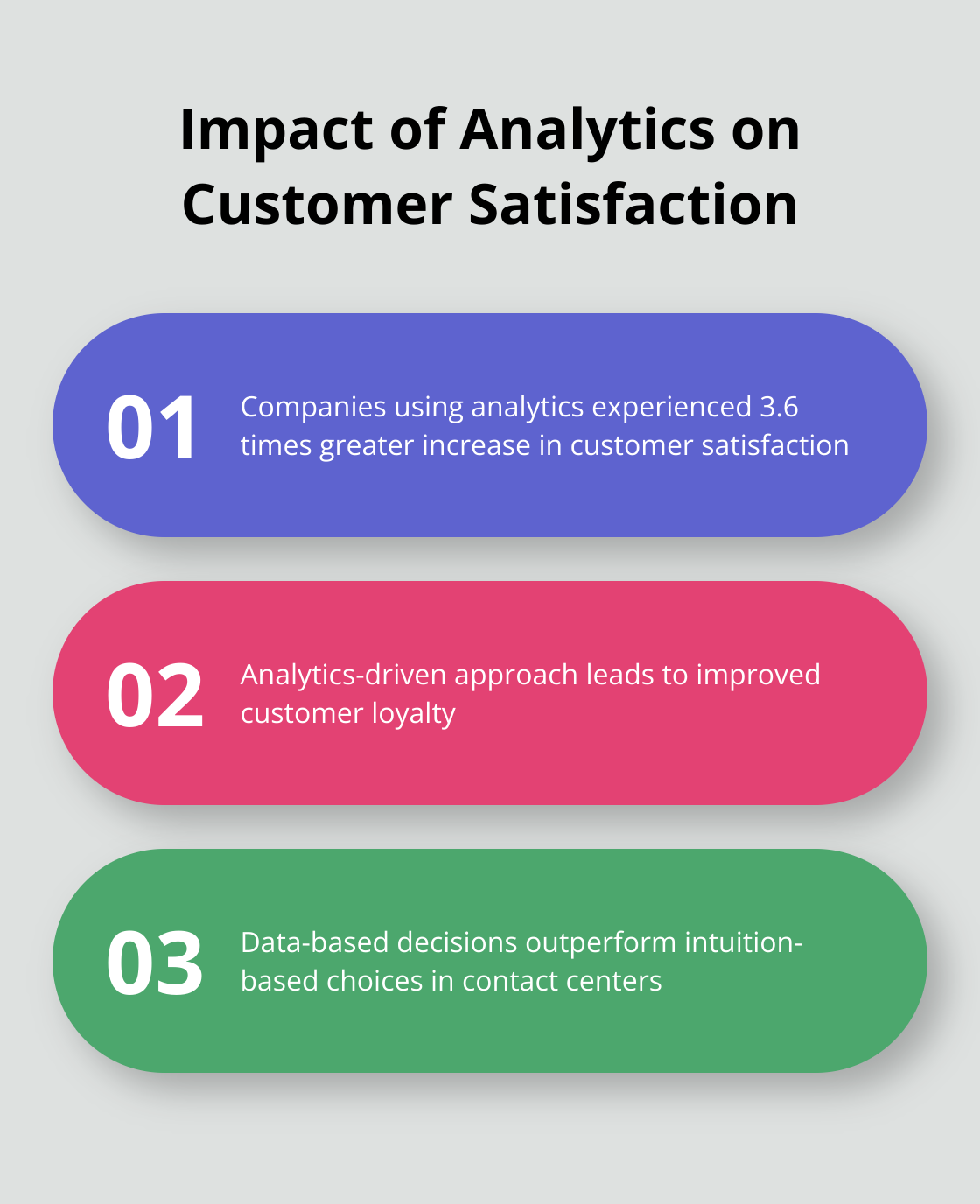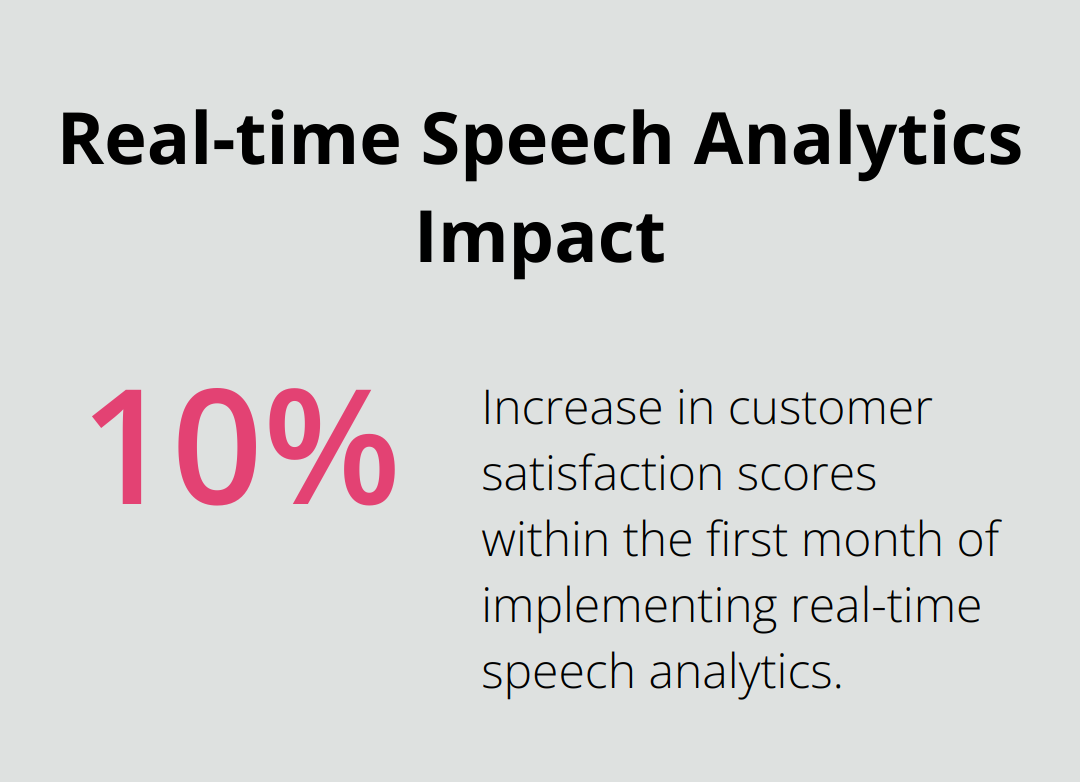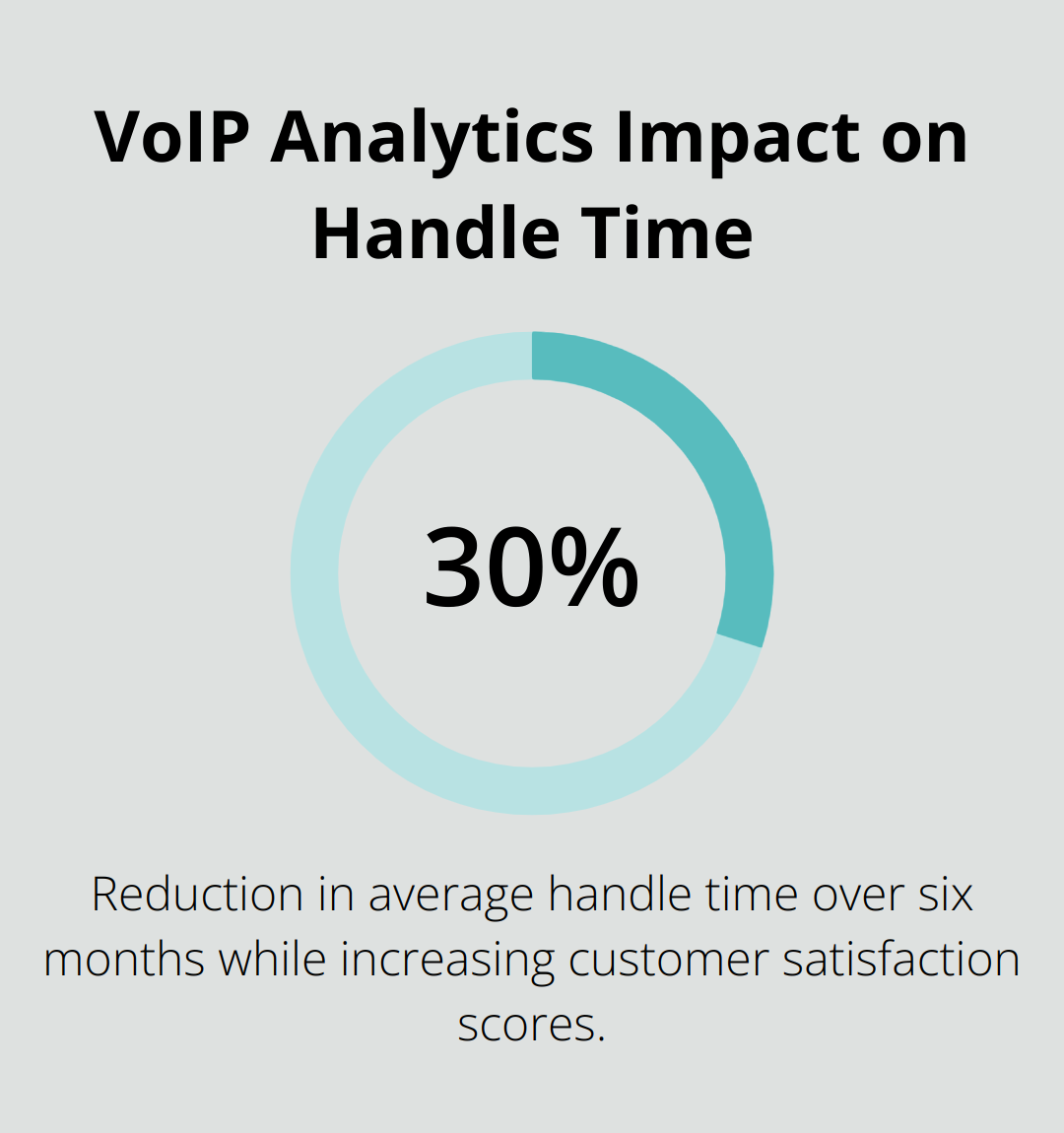VoIP analytics is helping businesses see their conversations in a whole new light. From call quality to customer sentiment, these tools turn raw data into real insight. At UCaaS Review, we’ve seen how analytics can turn a routine phone call into a smarter, faster, and more meaningful experience for both customers and teams.
By tapping into the data already flowing through their phone systems, companies can uncover patterns, fix issues faster, and make confident decisions rooted in evidence. In this article, we’ll break down how VoIP analytics improves customer satisfaction, streamlines operations, and supports sustainable business growth.
What is VoIP Analytics?
The Data-Driven Revolution in Business Communication
VoIP analytics transforms how businesses understand and improve their customer interactions. This powerful tool collects, analyzes, and interprets data from Voice over Internet Protocol (VoIP) systems to provide actionable insights into communication patterns, customer behavior, and operational efficiency.
Informed Decisions Through Data
VoIP analytics enables businesses to make decisions based on real data rather than intuition. A study by Aberdeen Group revealed that companies using analytics in their contact centers experienced a 3.6 times greater year-over-year increase in customer satisfaction compared to those that didn’t. This data-driven approach leads to improved customer satisfaction and loyalty.

Essential Metrics for Success
Several key metrics stand out as particularly valuable in VoIP analytics:
- Call Quality Score: This metric measures factors like delay, jitter, and packet loss to ensure clear, uninterrupted conversations. Addressing these factors effectively is crucial for a seamless voice-calling experience.
- First Call Resolution (FCR) Rate: A high FCR demonstrates that you prioritize customer needs and can solve problems efficiently. This shows respect for their valuable time and indicates efficient resolution of customer issues, reducing frustration and repeat calls.
- Average Handle Time (AHT): This metric helps identify areas where agents might need additional training or support to handle calls more effectively.
- Customer Sentiment Analysis: Analysis of the tone and content of calls allows businesses to gauge customer satisfaction levels and address issues proactively.
Surpassing Traditional Call Center Metrics
VoIP analytics offers capabilities that far exceed traditional call center metrics. While traditional systems might only track basic data (such as call duration and volume), VoIP analytics provides a wealth of additional insights.
For instance, VoIP analytics can integrate with CRM systems to offer a holistic view of each customer interaction. This integration allows businesses to personalize their service based on a customer’s history, preferences, and previous interactions.
Furthermore, VoIP analytics enables real-time monitoring and adjustment. Managers can make immediate changes to improve performance and customer satisfaction, rather than waiting for monthly reports.
Furthermore, VoIP analytics enables real-time monitoring and adjustment. Some UCaaS platforms, including options like PanTerra and 8×8, embed these capabilities natively, allowing managers to make immediate changes to improve performance and customer satisfaction, rather than waiting for monthly reports.
The Competitive Edge
VoIP analytics provides a significant competitive advantage. Companies that harness this technology can continuously refine their communication strategies, staying ahead of the curve in delivering exceptional customer experiences.
As we move forward, we’ll explore how businesses can leverage these powerful analytics tools to enhance their customer experience in real-time and predict future trends.
How VoIP Analytics Transforms Customer Experience
Real-time Insights for Immediate Action
VoIP analytics revolutionizes how businesses enhance their customer experience. This powerful tool enables companies to monitor and respond to customer interactions in real-time. The immediate insight allows businesses to address issues as they occur, potentially turning negative experiences into positive ones.
A major telecommunications company implemented real-time speech analytics and observed a 10% increase in customer satisfaction scores within the first month. The system alerted supervisors to calls where customers expressed frustration, which allowed for immediate intervention and resolution.

Predicting Customer Needs Before They Arise
Predictive analytics in VoIP systems elevates customer service to new heights. The analysis of historical data and identification of patterns allows businesses to anticipate customer needs and address them proactively.
Research firm Aberdeen found that companies homing in on customer needs and wants through predictive analytics increased their organic revenue. This proactive approach not only improves customer satisfaction but also reduces the overall volume of support calls.
Tailoring Interactions for Each Customer
Personalization stands as a key factor in exceptional customer experience, and VoIP analytics provides the necessary data to achieve this. The integration of VoIP communications with business apps allows businesses to create detailed customer profiles that inform every interaction.
A retail company reported a 15% increase in sales conversions after implementing personalized scripts based on customer purchase history and preferences. Agents offered relevant product recommendations and resolved issues more efficiently, which led to higher customer satisfaction.
Continuous Improvement Through Data Analysis
VoIP analytics empowers businesses to refine their customer service strategies continuously. The analysis of call recordings and transcripts helps companies identify common issues, successful resolution techniques, and areas for improvement in agent performance.
A financial services firm implemented this approach and observed a 30% reduction in average handle time over a six-month period, while simultaneously increasing its customer satisfaction scores. They achieved this by identifying best practices from top-performing agents and incorporating these into their training programs.

Accessibility for Businesses of All Sizes
VoIP analytics is not exclusive to large corporations. Small and medium-sized businesses can also reap significant benefits from these insights. As the technology becomes more accessible (and affordable), we expect to see widespread adoption across businesses of all sizes, which will lead to a new standard in customer experience.
The transformative power of VoIP analytics extends beyond customer interactions. In the next section, we’ll explore how businesses can effectively implement these tools to maximize their impact on overall operations and customer satisfaction.
How to Implement VoIP Analytics in Your Business
Select the Ideal VoIP Analytics Solution
Choosing the right VoIP analytics tool is essential for successful implementation. Look for solutions that offer comprehensive call quality metrics, real-time monitoring capabilities, and integration with your existing systems. Consider tools that provide customizable dashboards and reports. This flexibility allows you to focus on the metrics most relevant to your business goals. If improving first call resolution is a priority, ensure your chosen tool offers detailed analytics on this metric.
Empower Your Team with VoIP Analytics
Effective use of VoIP analytics requires more than just implementing the right tools; it demands a team that understands and leverages these insights. Invest in comprehensive training programs for your staff.
Create a culture of data-driven decision-making within your organization. Encourage your team to regularly review analytics reports and use these insights to inform their customer interactions. For example, if analytics reveal that certain product issues lead to longer call times, equip your team with targeted solutions for these specific problems.
Integrate Seamlessly with Existing Systems
To maximize the impact of VoIP analytics, integrate it seamlessly with your other business systems. This integration creates a holistic view of your customer interactions and business operations.
Integrate your VoIP analytics with your CRM system to provide agents with a complete customer history during calls. This integration can lead to more personalized interactions and faster issue resolution. Additionally, connect your VoIP analytics to your workforce management system to optimize staffing based on predicted call volumes and patterns.
Customize Analytics for Your Business Needs
Every business has unique requirements and goals. Customize your VoIP analytics to focus on the metrics that matter most to your organization. This might include call quality scores, first call resolution rates, or customer satisfaction ratings. Try to align your analytics with your overall business objectives (e.g., improving customer retention or increasing sales conversions).
Regularly Review and Adjust Your Strategy
Implementing VoIP analytics is not a one-time task. It requires ongoing evaluation and adjustment. Set up regular review sessions to analyze the data and insights generated by your VoIP analytics tools. Use these sessions to identify trends, spot areas for improvement, and make data-driven decisions about your communication strategies.
From Metrics to Momentum
VoIP analytics it’s a lens into how your business communicates, reacts, and improves. Real-time data, predictive insights, and customer sentiment tracking help turn everyday conversations into long-term loyalty.
If you’re wondering where to begin, start with what’s already in front of you. Review your current workflows, call performance, and support challenges. Then ask, Where are the gaps? The right VoIP analytics platform helps close those gaps and brings clarity to what’s working and what’s not.
Of course, technology alone isn’t enough. The real progress happens when your team knows how to use the data. That’s where training, integration, and process alignment become essential.
At UCaaS Review, we’ve seen how the right UCaaS provider can make analytics feel less like an add-on and more like a natural part of how you serve customers. Whether you’re scaling a team or refining a contact center, we help you find a solution that fits in real life, not just in theory.



